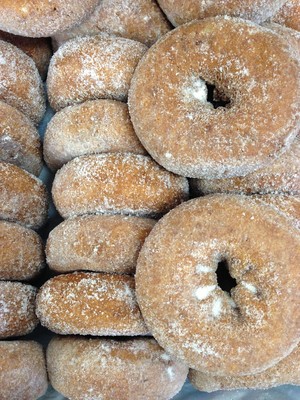
Highland Orchards Farm Market
25 Apr Wed 2018
Edible Flowers
Herb flowers are from herbs like lavender, basil, mint, and thyme that can be eaten just like the rest of the plant.
Ornamental flowers usuallyfollow the petal-only rule: most come from plants where the colorful petals are the only edible part of the plant. Some plants are exceptions. Be absolutely certain before trying other parts of the plant.
5 Important Things:
1. Always know what flowers are edible before you eat them- be absolutely sure of the plant. If you’re unsure, steer clear! Safety comes first! Some flowers are not edible and can make people very sick.
2. Know the plant’s surroundings. A beautiful stand of edible flowers growing by the roadside may look delicious, but plants are very good at taking up toxins from the soil, rain, and air and storing them in their roots, stems, leaves, and flowers. They clean the environment but may become harmful for people to eat.
3. Similarly make sure you know that the place where you pick edible flowers was not sprayed with any herbicides or pesticides. Eating organic flowers is always safest for your health.
4. Allergy awareness- if you are sensitive to pollen, be careful trying flowers. Do not eat the pollen from the flower. Follow the petal rule- eat only the petals- and wash the petals well. Try eating flowers a little at a time to begin with, and never eat the flower of a plant you know you are allergic to.
5. Plants that are safe for humans to eat are not always safe for pets. Petpoisonhelpline.com has a full resource list of plants (click on “poison list” and check the box to search by “plants”) if your cat or dog has eaten something you’re unsure about. They also have a number to call to guide you through helping your pet if they are in need.
Come plant your own pot of edible flowers on Friday, April 27th. Stop by anytime between 2 and 5 pm and we'll help you put together a pot of nasturtium, pansies, and calendula. $10.
Impress your friends and family with the plating of your food.
| Name of Flower | Goes well with ... |
| Basil (Ocimum basilicum) | tomatoes, vegetables, fish, chicken, pasta, rice |
| Bee Balm/ Bergamot petals (Monarda didyma) | salads, vegetables, pasta, fish |
| Borage (Borago officinalis) | salads, fruit |
| Calendula (Calendula officinalis) | salads, stews |
| Catmint (Nepeta cataria) | vegetables, pasta, rice |
| Chicory (Cichorium intybus) | salads |
| Chives ( Allium schoenoprasum) | salads, vegetables, sauces |
| Cilantro (Coriandrum sativum) | Asian dishes, salads, soups, vegetables |
| Dandelion (Taraxacum officinale) | salads, stir fry |
| Dill ( Anethum graveolens) | salads, fish, vegetables, dressings, pickles |
| Garlic chives ( Allium tuberosum) | salads, vegetables, sauces |
| Honeysuckle (Lonicera caprifolium) | salads, desserts |
| Lavender (Lavandula angustifolia) | chicken, desserts, cakes, biscuits, honey |
| Mint (Mentha spp.) | salads, desserts, vegetables |
| Nasturtium (Trapaeolum majus) | salads, vegetables |
| Oregano (Origanum vulgare) | vegetables, fish, chicken |
| Pinks/Carnation/Dianthus (Dianthus spp.) | fruit, desserts, cakes |
| Primrose (Primula vulgaris) | salads |
| Rose petals (Rosa spp.) | jam or jelly, cake |
| Rosemary (Rosmarinus officinalis) | tomatoes, lamb |
| Sage (Salvia officinalis) | Asian dishes, rice, meat |
| Sunflower petals (Helianthus annus) | Asian dishes, salads, pasta |
| Violet/Pansy (Viola odorata, Viola spp.) | salads, desserts |
| Thyme (Thymus vulgaris) | as herb |
| Yarrow ( Achillea millefolium) | salads, vegetables |
| Zucchini (Cucurbita pepo) | usually lightly battered or stuffed; but remove stamens first |
www.HighlandOrchardsFarmMarket.com
